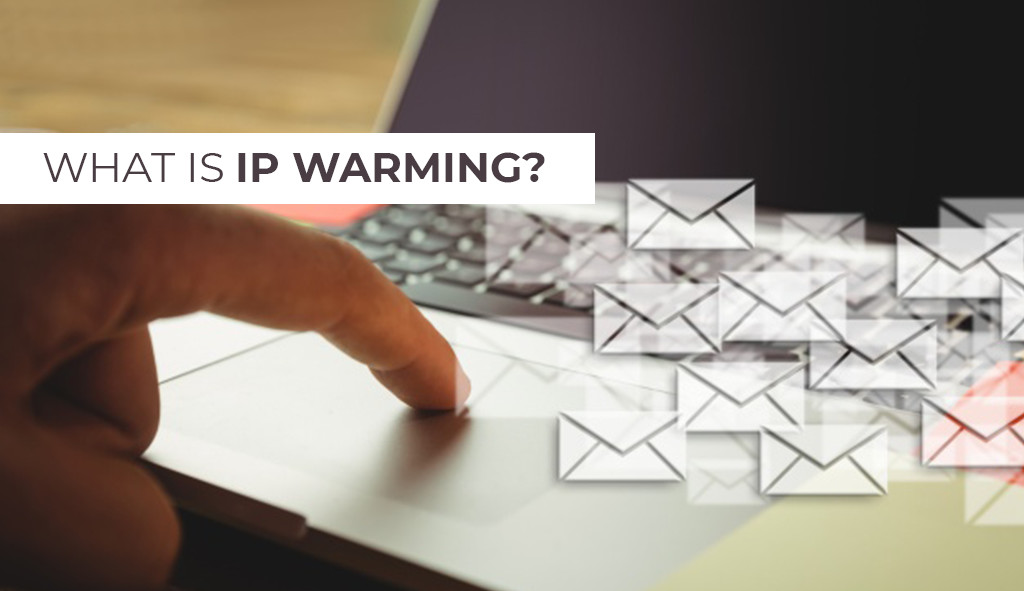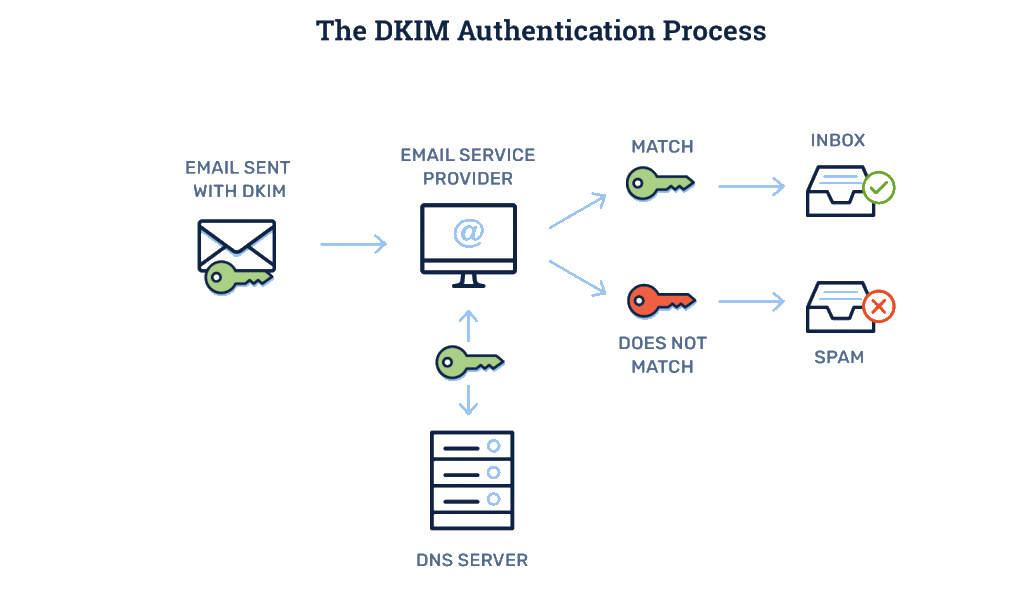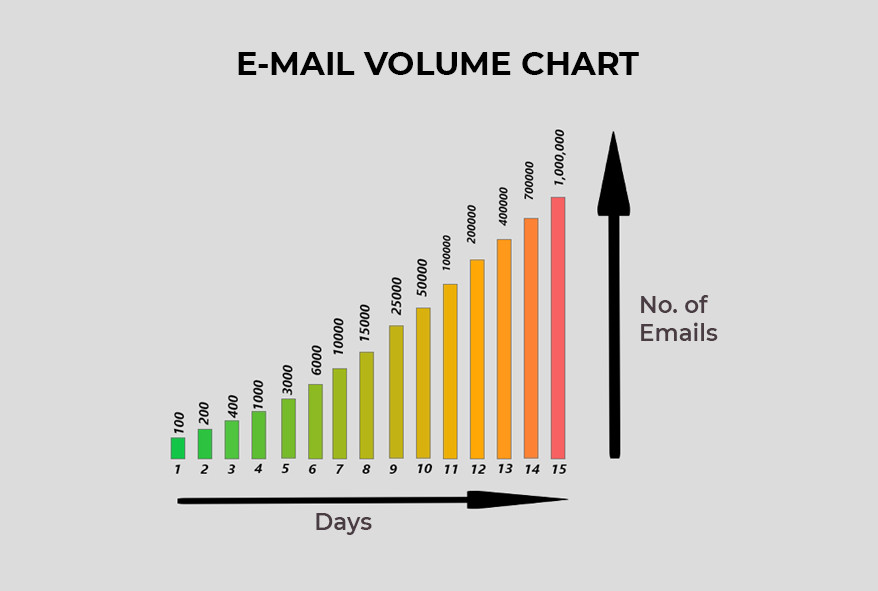What is IP warming?
Table of contents

If you wish to run a victorious email marketing campaign, successful email deliverability is crucial. But it becomes quite a tricky task because without a good sender reputation landing your emails in the inbox is very challenging, especially when you are sending an email from a brand new IP address. That is where warming up an IP address plays an important role to build a good sender reputation. If you don’t warm up your IP properly, the Internet service providers will not deliver your emails in the inbox and will land it in your recipient’s spam box, where they will not be even read. So, let us first understand the term IP warming, and then learn more about the need for IP warming, the process of IP warming, and the benefits of IP warming.
IP warming is an email marketing term and generally a practice of establishing a reputation for a new IP or an IP that has not been in use for some time by gradually increasing the volume of sent emails. Where IP address is used to identify you as a sender by the ISPs to assign you an IP score. IP warming is designed to help you build a positive reputation with the ISPs (Internet Service Providers) so that they allow your emails to pass the spam folder and get delivered in the inbox. Email marketing is one of the stepping stones towards successful internet marketing for any business. So to ensure Email marketing is conducted in an efficient way IP warming is an essential step.
Why Warm up your IP?
When you add a new dedicated IP address, the internet service providers are suspicious of emails coming from that IP as it is considered cold. They will immediately start evaluating the mails coming from that IP. So, to get your email delivered with a cold and new IP address, you need to warm it up.
Internet service providers have to protect their customers from spam. Since email volume is the key determining factor for internet service providers to detect spam, it is best, to begin with sending in low volume and gradually move up to larger volumes. They will block large volumes of email from new IP if the sending pattern is unfamiliar because most often it comes from the spammers. This is the reason you need to use best practices to warm up your IP. The purpose behind it is to gain the internet service provider’s trust by developing your identity.
This will help the internet service providers to analyze, identify, and recognize your sending habits and record how your recipients are engaging with your mail.
IP warming is an opportunity to improve performance, reduce costs, and most importantly reach inboxes. You will also find that your email marketing task has become much easier as you will get more time to focus on creating a strategy, providing engaging content, and monitor your results rather than chasing down the problems.
How can you warm up your IP?
The IP warming is a consistent process and may take up to 4 to 8 weeks for earning a good reputation from email service providers. It basically depends on the volume of emails you set to send and the level of your subscriber engagement. An approach like sending all emails right away can damage your sender’s reputation image and may result in issues like hard bounces.
Moreover, sending emails infrequently may take a long time to build a positive sender reputation. Hence, to speed up the process and create a good reputation you need to follow a step-by-step process.
Step 1: Authenticate your emails
Set up DKIM, SPF records, and DMARC so that your emails get more credit from the email service providers.
- Domain Keys Identified Mail (DKIM)

Domain keys identified mail depends on the servers that check message validation and certify an e-mail message. Basically, it is a way to confirm the sender’s domain address with a cryptographic signature.
- Sender policy framework (SPF)
The sender policy framework is a validation system for emails designed to detect email spoofing. Earlier electronic mail exchange relied on SMPT that could not verify the validity of the sender’s address which allowed to put any email address in the “from” section. The spammers and phishers use to take advantage of this deficiency frequently, so the idea of SPF was brought to public attention. With SPF now it is easy to specify which computers are authorized to send mails from the domain name they have registered in the DNS.
- Domain Message Reporting and Conformance (DMARC)
Domain Message Reporting and Conformance helps the email domain owners to protect their domain from unauthorized use and email spoofing. Specifically speaking it allows senders to specify how to handle emails that were not authenticated by setting up SPF or DKIM. When deliverability drops or someone tries to spoof your domain, DMARC data can be of great help to know what’s going on.
Step 2: Create Smart Segments
The practice of splitting up your email list into more targeted groups is called segmentation. Use a proper database and if you don’t have engagement data, you can use your most recent subscribers because right after the users sign up for an email list, they tend to be most active. Divide that subscriber’s list into smaller sections and make sure to choose the emails that have already connected with you before. You need to segment your list according to the most active and engaged subscribers as this is one of the most important factors that can impact your sender reputation. Because the initial ‘sends’ act as a base factor for the internet service providers to determine the reputation of your sender IP address. You need to keep an eye on three main factors to be able to segment your data properly namely the send ratio, the click ratio, and the open ratio.
- Send ratio:
This will help you identify how many emails have you sent to a particular subscriber and how many have the subscriber engaged with. - Click ratio:
This will help you determine how many people have visited the link you mentioned in the email and also which emails were most engaging. - Open ratio:
This will help you identify how many people have opened and read a particular email.
By determining these three factors you will be able to determine the most engaging users and also know which emails are found to be most engaging to the users. So, get ready to create smart segments that will help you build a good IP reputation.
Step 3: Select a Warmup Method and Execute
There are basically two ways to warm up your IP:
Ramp-up Method – One
In this method, your approach will be sending one email to different segments you created. For example, if you have created 5 segments then and you decided to send an email, you will be sending that mail to the first segment today. Then the same mail will be sent to the second segment tomorrow and the same procedure will be repeated for the third, fourth, and fifth segments.
Ramp-up Method -Two
In this method, you will first send emails to a particular list of contacts and then the next day you will send a different email to the same list plus some additional contacts. You can increase the sending volume as per your schedule but a usual approach is to double the volume. For example, if today you sent 200 emails, then the volume will increase to 400 the next day.
Both these methods have a different journey, but they will take you to the same place.
You can start your execution by creating highly interactive content. Make sure that you create more engaging and better content. You will be able to strengthen your relationship with your subscribers by sending such emails. Additionally, you can show the internet service providers that your content is valuable to the subscribers. You can try both the above-mentioned methods to send your emails and choose the method that works the best for you.
Step 4: Track your Performance
This step is important to maintain your IP reputation. Now as you have begun with your email campaigns you need to monitor different metrics.
- Monitor the bounce-back reports, check whether if it has increased and if so cool down your process a bit by reducing the sender volume.
- Monitor spam complaints and traps, cool your campaign if you see a spike in spam complaints.
- Monitor the Open ratio and click-through rates, if they are dropping then find out ways to engage with your audience by creating good content.
- Monitor your ‘unsubscribe rate’- a sudden rise in your ‘unsubscribe rate’ indicates that something is wrong with your emails.
You can enhance your performance by properly monitoring and analyzing your IP address.
Step 5: Scale your Efforts and Repeat
Now, as you have established all the metrics, you can scale up. Continue sending the emails to the most active and engaged segments and gradually scale up your daily limits.
If you are able to maintain a good reputation with this, you can then slowly start adding your less engaged users to your sending list. But remember to avoid the ones who have not engaged at all.
After this you will need to keep repeating the same process like inclusion and exclusion of segments, creating engaging content, and cooling down and ramping up of sending volume as required. This is necessary for maintaining a good sender reputation and run your email marketing strategy successfully.
What are the best practices for warming your IP?
- List scrubbing
You can start with excluding all the users who have previously complained, unsubscribed, or are generally inactive. If you keep sending emails to these users, it will invite deliverability risks like low engagement, spam, traps, and invalid email address. This will greatly affect your ‘sender reputation’ negatively.
This is something you should keep doing continuously for a successful email marketing campaign.
- Send consistently
In email marketing, consistency is the key. Try sending emails consistently every day and if you skipped a day just let it go, don’t try to catch up, just start from where you left and send only a certain amount of emails that was scheduled for the day. Because if you try catching up, there are high chances of the email service providers noticing the suspicious hike in volume.
Being consistent will act as an engagement metric and will help you to create an audience habit. For example, if you keep sending emails every morning, they will know that they are going to get an email from you first thing in the morning.
- Stick to your schedule
As we mentioned above that consistency is the key and thus sticking to your schedule is necessary. No matter how many IPs you have, stick to your ramp-up schedule, and don’t be greedy.
For example, if you have more than one IP, say 2 or 3 IPs this doesn’t mean that you can double or triple the number of emails you need to send in a single day.

- Start by sending emails in smaller volumes then increase them gradually
As we discussed above, that email service providers treat email volume as a key determining factor for detecting spam, you should manage the volume appropriately. High-volume campaigns are treated in a more skeptical way by internet service providers. Begin by sending the mails in small amounts and then scale gradually towards the volume of emails you want to send.
- Verify your email list
You need to verify your email list constantly to check if you have eliminated all the inactive and unsubscribed users. Because there will be always incidents like a user has unsubscribed or marked your email as spam.
It is better to remove these users from your list to avoid sending any more emails accidentally. Because sending emails to these email addresses will result in more bounces that will damage your sender’s reputation.
- Send the most engaging types of emails
More than promotional emails educational, informative, and entertaining content shows better engagement in email marketing. Send newsletters with the latest news related to your industry and provide high-quality content in your emails.
If you want to send promotional emails, you a valuable offers and discounts in your marketing emails. In the end, the aim is to create personalized, and eye-catching emails that provide your subscribers a positive experience.
- Never purchase your database
Buying an email list won’t get you far, the only way you can have an email list is by growing it gradually. Purchasing a database is morally, and ethically wrong. It is a violation of the user’s privacy because after all, you are buying the email list without their consent.
Moreover, the internet service providers will ban you from their email system, if they find out that your emails are spammy based on the responses of recipients. This will prove to be a total wastage of money and time because the main goal of email marketing is to convert your users into your potential customers and that won’t be achieved by buying the list because the subscribers are most unlikely to respond.
What are the benefits of IP warming?
- IP warming helps in building a good email domain reputation.
- IP warming reduces your bounce rate, spam complaints, and unsubscribe rate.
- IP warming increases your engagement rate by landing your emails in the inbox.
- IP warming helps you determine which emails work best for you are most engaging to the customers.
- IP warming makes email marketing very easy.
- You build a good customer base while warming up your IP.
Ensuring that your emails reach your recipients is as important as your blogs. So, warming up your IP is a vital part of email marketing and one of the reasons for its success if done properly. Though it requires a lot of patience and time, the efforts are worth it. With all the benefits it offers, IP warming helps you flex your email marketing muscles and reach your full potential.
The IP warming process can be daunting, and moreover, if you are doing it for the first time taking professional help will be quite essential. At, YashaaGlobal, we ourselves have faced many problems and finally came up with our own email marketing platform to help you out.
As email marketing is a powerful way to improve your engagement rate and customer base, YashaaGlobal will help to succeed through this journey. For detailed information also check our blog on a complete guide to successful email marketing.







